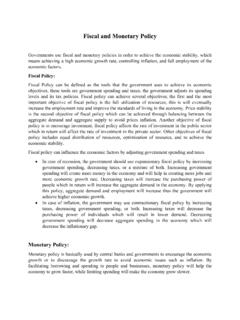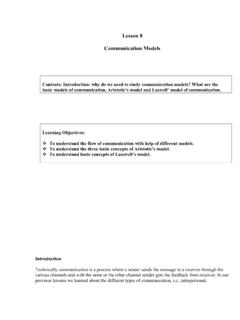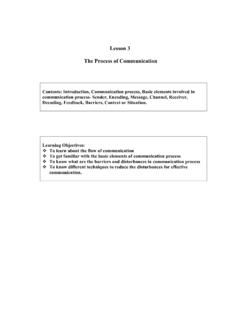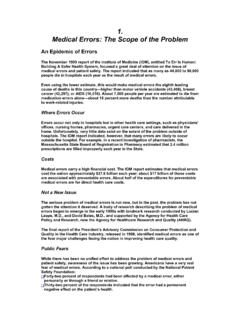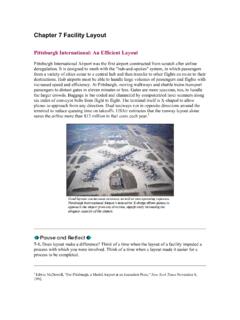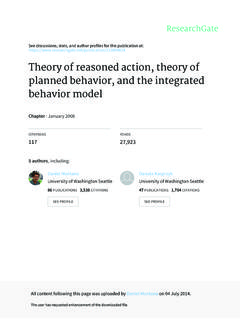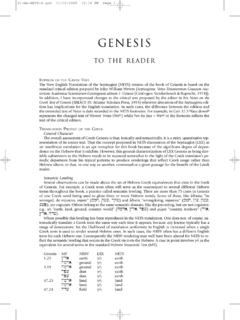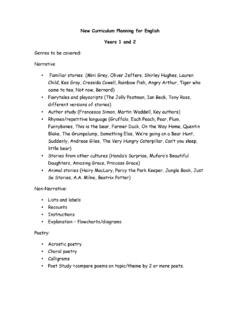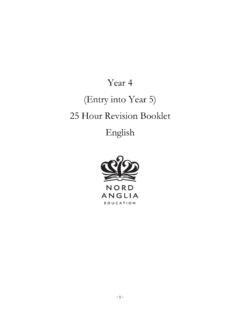Transcription of Transcription exercises - Masarykova univerzita
1 Transcription exercises General remarks: There are essentially two types of Transcription , phonetic and phonemic (phonological). Phonetic Transcription is more complex, showing detailed articulatory characteristics of individual sounds. In these lessons, we will be learning phonemic Transcription , which only uses a limited number of symbols representing sounds which are in a certain language able to distinguish meanings in words. There are 44 such sound in English (20 vowels and 24 consonants) and we call them phonemes. (study the phonemic chart). In addition, you will be asked to mark features of minor importance which, however, cause problems to Czech speakers of English: (1) aspiration /k t/, (2) dark / / x clearl /l/.
2 /l p x p / (3) linking r / r z/ (4) syllabic consonants, especially /l / /m d /, /p sn /. Transcription exercise 1: In Britain and around the world, the image of the family continues to change. The traditional "Victorian family", in which the man was the breadwinner, the woman the homemaker and the children numerous and obedient, is giving way to new ideas about what the modem family should look like. / n br t n n(d) ra nd w d / i m d v f m li k nt nju z t t"e nd // tr d " n v k t $ r n f m li /. n w t" m n w z bredw n / w m n h mme k /. n(d) t" dr n nju m r s n/d/ bi d nt / z & v ' we s t nju a d z ba t w(t m(d n f m li " d l k la k // /. Notes: The first step is to learn well all the 44 symbols of the phonemic chart.))
3 Next step is to check pronunciation in a good monolingual English dictionary (Cambridge, Oxford, Collins, Longman). 1)There is a tendency to reduce strong English vowels in unstressed syllables to a weak vowel, especially schwa' ( ) - /br t n/, / ra nd/, /w m n/ or /i/ at the end of words like /f m li/. /i/ is not a phoneme, therefore it is optional; it indicates that the quality of the final sound is not that of an / / used in stressed syllables 2)In the word world the /l/ sound is dark because it precedes a consonant. In the word family the /l/ sound is clear (like the Czech /l/) because it precedes a vowel. 3)Please note in diphthongs /a /, /a / we use a special symbol in the first part - /a/ - as opposed to cut /k )t/, cart / k * t /.
4 Transcription exercise 2: One of the most obvious characteristics of the new family is that there are not always two parents. Due mostly to the rise in divorces since World War II, single-parent families are becoming more and more frequent and accepted in British society. Usually, it is the mother who takes responsibility for raising the child, and she has to balance the pressures of earning a living and raising her children at the same time. / w)n v m st (bv s k r kt r st ks v nju f m li+. z t r n(t $ w z t u p e r nts // dju m stli t ra z n d v$ s z s ns w d w$ w)n / s '& p e r nt f m l z b k )m ' m$ r n m$ fri kw nt n(d) ksept d n br t ". s sa ti // ju li / t z m) hu t e ks risp(ns b l ti f re z ' t"a d / n(d) "i h z t b l ns p re" z v + n ' l v ' n(d) re z ' (h) t" dr n t se m t a m // /.
5 Notes: 1) In the word one /w)n/, the vowel is short, the symbol used is therefore /)/ as opposed to car /k * /. 2) In the word takes /t e ks/, /t/ is aspirated. It is because it is found in a stressed syllable before a vowel. The same rule applies not only to /t/, but also to /p/ and /k/. 3) Note that ng at the end of words is never pronounced /'k/, but only /'/! Although it does not affect intelligibility, this is not done by RP speakers. 4) The word and is one of the weak forms, words like prepositions, auxiliary verbs etc. have two possible pronunciations strong: / nd/ and weak / nd/, / n/, /n/. Under normal circumstances the weak pronunciation is used. Weak pronunciation can have a couple of variants.
6 Transcription exercise 3: However, even in families with both parents present, many mothers are giving up the role of homemaker and pursuing their own careers. Some go on maternity leave after their children are born and then take up part-time work when the child is old enough to go to school. Others feel that their careers come first and wait until they have fully established their career before having children. / h ev / i v n n f m l z w b , p e r nts p rez nt /. meni m) z & v ' )p r l v h mme k r n(d). +p sju ' r n k r z // s)m & (n m t n ti li v * ft t" dr n b$ n n(d) en t e k )p p * tt a m w k wen t"a d z d n)f t & t sku // ) z fi t k r z k )m f st / n/d/ we t )nt ei (h) v+. f li st bl "t k r b f$ h v ' t" dr n // /.
7 Notes: 1) The word are is one of the weak forms. Although its strong pronunciation is /* /, it is not used as much as Czech speakers often think, usually only when the word is stressed, You're saying that John and Mary are not at school today, but they are . However, normally are is unstressed and weak: John and Mary are at school today. / r tsku /. 2) In British English final /r/ is not pronounced there / e /, of which the weak form is / /. If the following word starts with a vowel, /r/ is pronounced and we call it linking r. their own / r n/. 3) The pronunciation of the plural ending s depends on the pronunciation of the preceding sound. If the preceding sound is voiced, then the plural s is pronounced as /z/ (family.
8 Families /f m liz/, mothers /m) z/. All the vowels are automatically voiced, so if the plural s is preceded by a vowel, it is always read as /z/. Other cases: voiced final consonant dog dogs /d(&z/. Voiceless final consonants parent parents /p e r nts/. 4) The simple past tense ending of regular verbs (-ed) can also be pronounced in three ways /t/, /d/ and / d/. If preceded by a voiceless consonant, it is pronounced as /t/ (established / st bl "t/ ). If preceded by a voiced consonant or a vowel, it is pronounced as /d/ live lived /l vd/, play played /p le d/. Finally, if preceded by /t/ or /d/, the past ending (-ed) is pronounced as / d/ - wanted /w(nt d/, traded /t re d d/. 5) The word then is not a weak form.
9 It is a word with a full meaning. Therefore it cannot be reduced to */ n/. / n/ is a weak form for than , for which the strong pronunciation would be / n/. Transcription exercise 4: Another area which has changed significantly is what happens before marriage. In the past, people lived with their parents until they got married, and each marriage was supposed to be a "white wedding". Today, living together before marriage and premarital sex are considered normal, and many people "tryout" their relationship by living together before getting married. / n ) r e r w t" z t"e nd d s &n f k ntli z w(t h p nz b jf$ m r d // n p * st / p i p l vd w p e r nts +)nt e &(t m r d / n(d) i t" m r d w z s p zd t +.
10 Bi(:) wa t wed ' // t de / l v ' t &e b f$ m r d n(d). prim r t seks k n s d d n$ m / n(d) meni p i p t ra . a t r le " n" p bif$ &et ' m r d // /. Notes:1) Linking r another area / n) re r /. 2) / z/ - weak form of auxiliary has . 3) /t"e nd d/ - the ending ed has to be pronounced /d/ because the preceding sound /d / is voiced, see also marriage /m r d /. 4) /p * st/ - /p/ is aspirated it is in a stressed syllable before a vowel. However, if /p/, /t/, /k/. are preceded by /s/, aspiration does not take place, school /sku /, not */sk u /. 5) /s p zd/ - the rule for aspiration is in operation - /p/ is in a stressed syllable before a vowel 6) /p i p /, /pri m r t /, /n$ m / - examples of syllabic /l / - the syllabic consonant replaces a vowel in an existing syllable.

